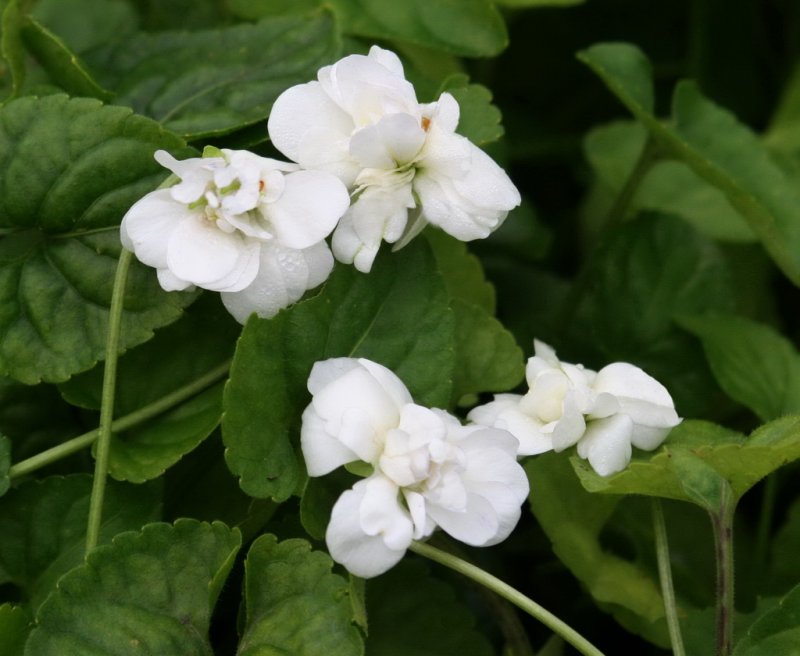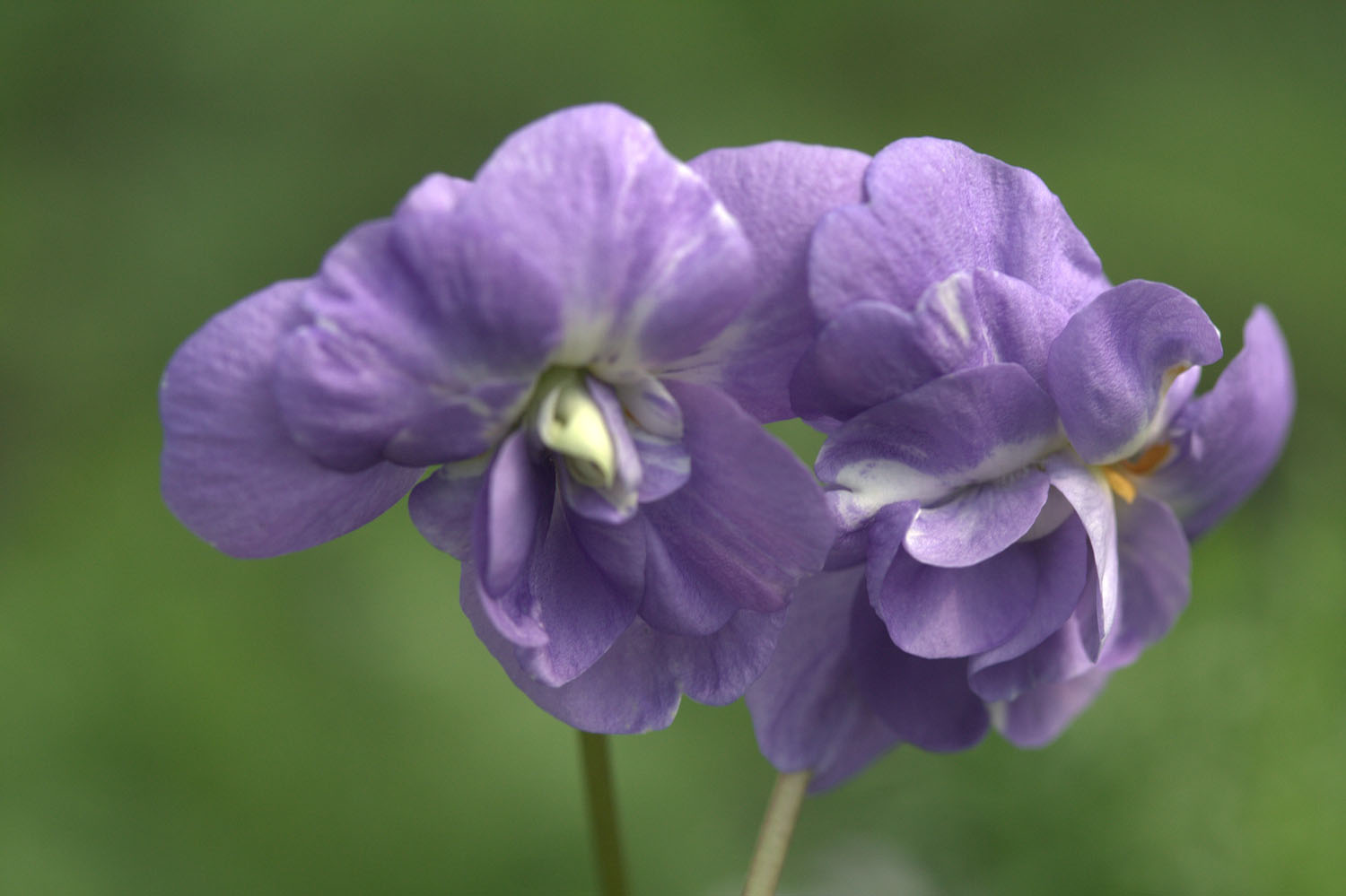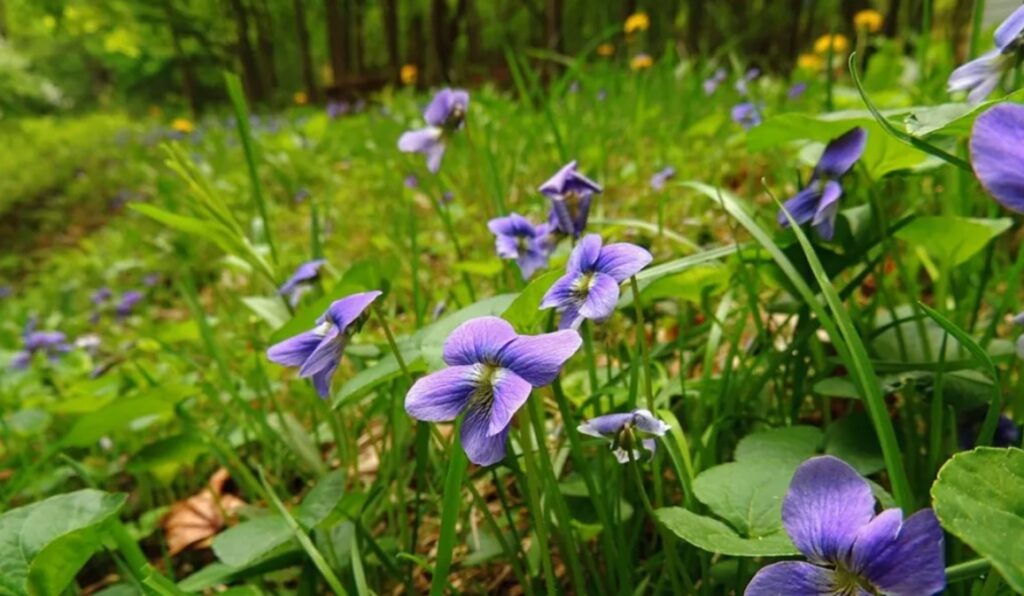Uncategorized
Violets
Walking into one of our large growing houses today I almost swooned from the intense fragrance from two batches of Parma violets whose perfume filled the whole poly house.

Viola odorata ‘Comte de Brazzi’
Parma violets were a great favourite of the Empress Josephine and were grown in her garden at Malmaison.
I didn’t go to the village school. My parents sent me to a school a bus journey away from the village. In consequence I had no friends of my own age in the village. I wasn’t dismayed. It was as it was. Rather than hanging around with other boys I spent my childhood from six years of age wandering around the nearby countryside by myself. I’d more often than not come home with a bunch of wild flowers. I don’t ever remember being shown where these wild flowers grew. I just knew. Cowslips, bluebells, primroses, violets, marsh marigolds, wood anemones and mistletoe which I picked for my grandmother as it was her favourite flower. I knew where each flower grew and when they would be blooming.
There were two patches of wild sweet violet, Viola odorata, a couple of meadows away from my house. One held the dark violet form and the other the white. I would pick a bunch of each and circle them with a ruff of leaves. The flowers were much smaller than cultivated violets and from memory had a stronger fragrance.
There was another native violet growing in the meadows close to the village which we called the dog violet, Viola riviniana. Larger and paler in flower than V. odorata it was scentless. I’ve often wondered if this species was crossed with the sweet violet to give flowers of greater size and maintain some fragrance.

Viola odorata ‘Lady Hume Campbell’
In times past many clones of sweet violet were grown widely in Australia for the florist trade. They or their progeny grow in many old gardens and when happy their runners will cover large areas. In Olinda fifty years ago I remember the floor under an old oak tree some 20 metres across carpeted with wall to wall violets.
In times past many clones of sweet violet were grown widely in Australia for the florist trade. They or their progeny grow in many old gardens and when happy their runners will cover large areas. In Olinda fifty years ago I remember the floor under an old oak tree some 20 metres across carpeted with wall to wall violets.
Back to Parma violets which “…possess a delightful fragrance reminiscent of ordinary sweet violet perfume mixed with that of wallflowers.” During the 19th century many hundreds of hectares were grown in the south of France for the perfume industry but in the 1890s two German chemists spoiled the fun and synthesized the violet fragrance. It was then produced in factories putting an end to the natural Parma violet growing industry.
In Australia gardens Parma violets make dense, compact carpets of heart shaped leaves rather than running all over the place like common sweet violets.
Parma violets were a great favourite of the Empress Josephine and were grown in her garden at Malmaison. Happily we don’t need to be an empress to be bewitched by the fragrance of these wonderful flowers.
